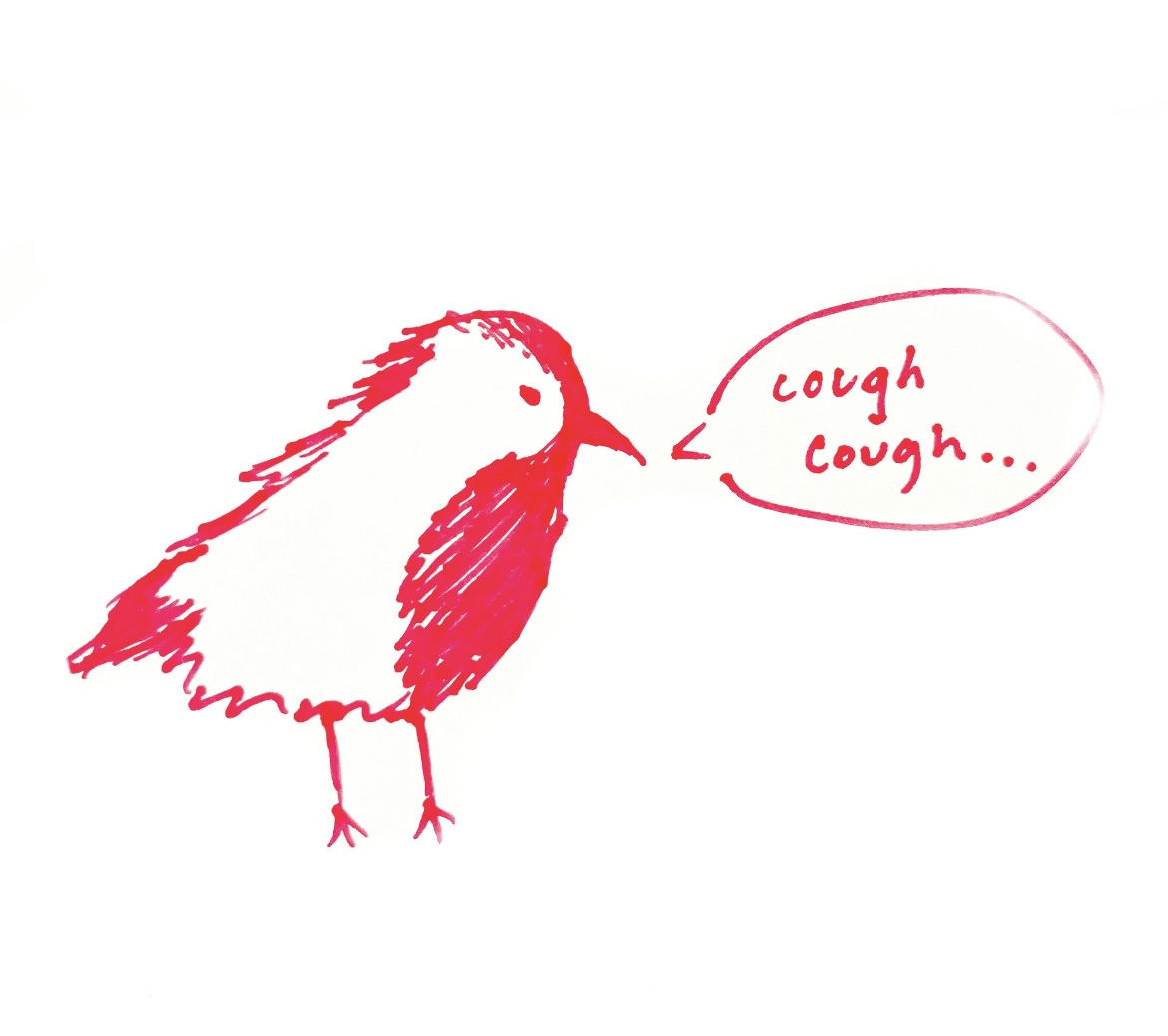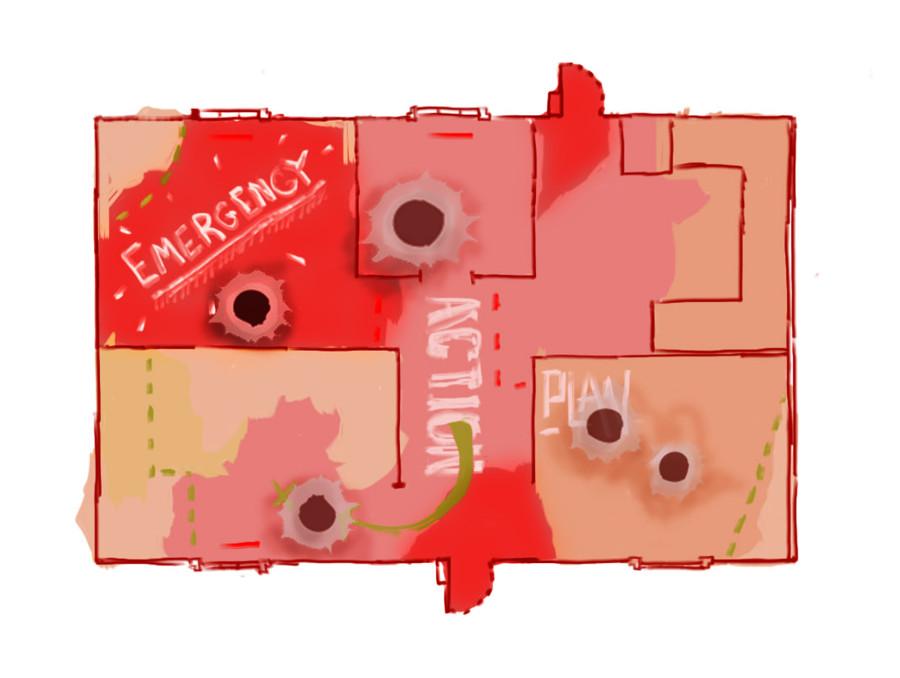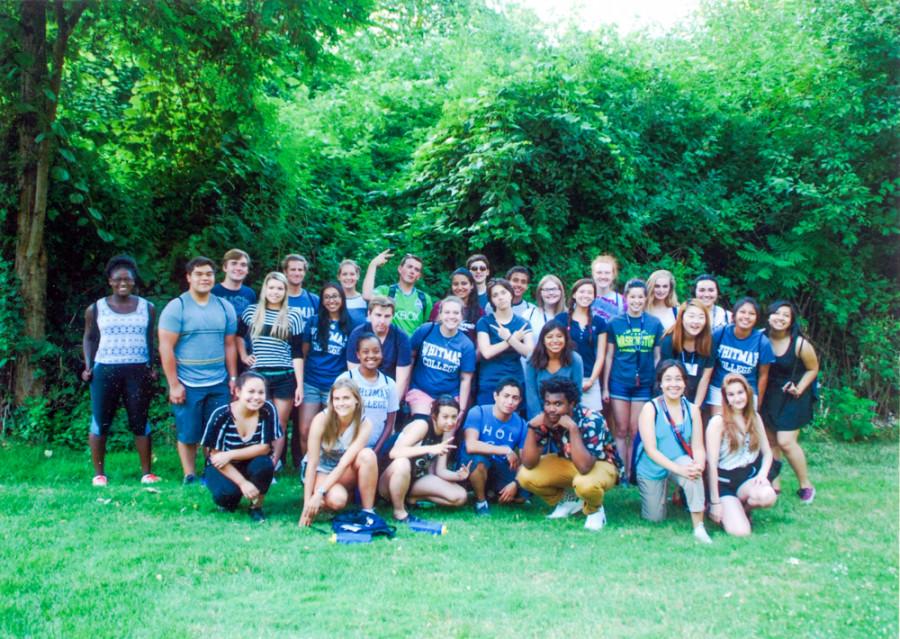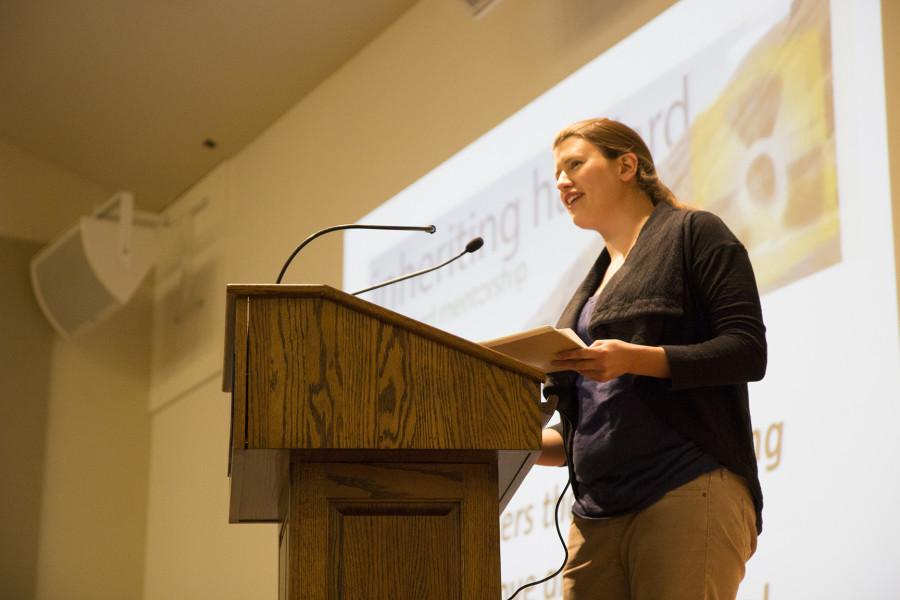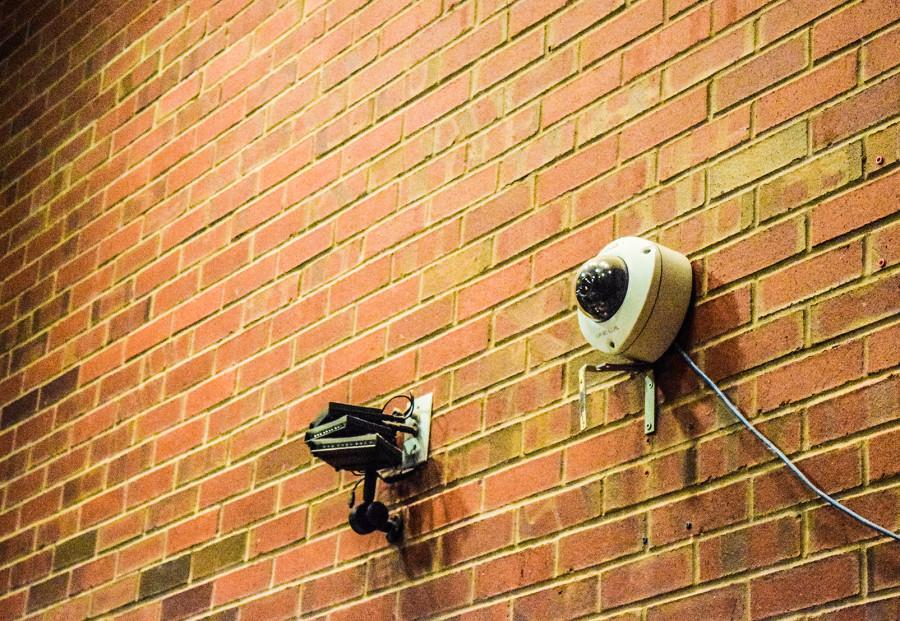
The drive east along Highway 12 from the Tri-Cities back towards Walla Walla and the Whitman campus rarely fails to amaze me. At the left turn by Wallula Gap, I stare west at the vast expanse of land carved out by the ancient Missoula floods, captured by the exposed magnificence of the land in all its contours and forms and patterns.
I’ve stopped many times on drives from Wallula Gap back to campus to admire the colors of the sky, count the cows or marvel at the way the Blues rise up behind dwarfed Walla Walla’s downtown. Land counts around here, and it counts in a way that’s significantly different from the evergreen expanses of the mountains I call home on the west side of Washington. On campus, I love how the top floor of Reid yields views of the snowy Blues in the winter and how the windmills atop the ridge west of Walla Walla become silhouetted by dramatic sunset light. It’s land that commands attention.
<< >>
Many students’ first formal introduction to the land surrounding Whitman comes from excursions to the wheat fields north of campus. Whether it’s a section outing to fields along Lower Waitsburg Road, a picnic with a group of friends in a September sunset or a date to watch the sunrise over the Blues, “going out to the wheat fields” is a first-year rite of passage. Surrounded on all sides, we are literally the college amongst the wheat fields.

But students have particular connections to the surrounding land that aren’t as obvious as first-year excursions and occasional visits with friends. A portion of Whitman’s endowment––supporting various aspects of student life from scholarships to faculty salaries and programs––is garnered from farmland the college owns in Walla Walla and surrounding counties.
<< >>
Whitman received its first donated farmland from Cushing Eells, founder of the Whitman Seminary that predated the college. Since then––throughout the 1900s––the college has acquired land through gifts. Donation of farms is a form of giving: The profit from farmland supports the college and boosts the endowment, providing money beyond student tuition to fund Whitman endeavors.

A Farm Committee––comprised of alumni, trustees and community members––oversees the various aspects of Whitman’s farm management. Justin Rodegerdts is a financial analyst for the college and the staff liaison to the Farm Committee who oversees the day-to-day aspects of the management process. According to Rodegerdts, the fact that Whitman oversees such a significant amount of farmland makes it unique among its peer schools. Most other schools sell gifts of farmland because maintaining the land and tenants can be quite difficult.
“One thing that’s helped Whitman is just the sheer number of farms that we’ve set up,” said Rodegerdts. “[We have a] good structural way to govern the farms that incorporates both community members and yields a small amount of staff time. Because of that, it’s been great in not only helping solicit more donations of farms, but also keeping the farms that we have and making sure we run them smoothly and efficiently.”
The college currently operates 15 farms across four counties––Walla Walla, Columbia and Garfield counties in Washington State, and Umatilla county in Oregon. The farms primarily produce wheat, barley and peas. Land donations have historically been from alumni and community members in the area who have no one to pass their farmland on to.
“Obviously a lot of farmers have a real attachment to the land, and they want to make sure their farms are taken care of after they die,” said Rodegerdts. “The college has a good reputation of taking care of their farms, and they have a historical precedence of not selling the farms and keeping them in our endowment [to] maintain them as an income-producing asset for the endowment.”
Whitman hires tenants to work the land, while the Farm Committee is responsible for the more managerial aspects of the land. Tenants often pass down the responsibility of farming through family and generations. Profits from crops are divided between the tenants and the college, but the risks are shared as well. The farms operate under fixed cash leases, which means that the income from farms can be significantly impacted in bad crop years.
“We share the good years and we share the bad years with the farmers,” said Rodegerdts.

Last year, according to Rodegerdts, the farms yielded about $1.5 million for the college. But crop prices and demand affect these numbers significantly––the price of wheat alone can change drastically from year to year.To help mitigate the potential losses, Whitman purchases crop insurance on their land. None of the college’s farmland is irrigated, so the farms are particularly susceptible in years of lower precipitation levels.
<< >>
Whitman’s farms don’t only produce crops. With only about 19,000 of the college’s 24,005 acres tillable, there is non-producing land that can be used for a variety of purposes. Students can benefit from land put to use educationally, and recent projects have highlighted the multiplicity of ways in which the land can be used.
A biological field station at Braden Farm near Wallula Gap was instated in 2010 for access to hands-on field research for biology students. An observatory is located on land at Erickson Farm north of campus, and another telescope is under construction at a different site.
Braden Farm also has an installation of wind turbines, which generate power for the surrounding region and additional profit for the college. According to Rodegerdts, the turbines are part of the Stateline Wind Project, which was one of the first wind programs in the state when it was installed in 2001. The turbines were constructed and are owned by Florida Power and Light, but stand on land leased from Whitman.

“It’s definitely not just farming and [we’ve] grown into using our farms,” said Rodegerdts. “They are set up to be an income-producing asset of the college and we have a fiduciary responsibility to maintain that they continue to provide money for student scholarships and to support the college, but we also found other ways to help support the educational mission of the college.”
<< >>
Whitman land is used in such a variety of ways and provides for the college both educationally and financially. According to Rodegerdts, the farms don’t factor in significantly to the endowment. But they play a major role in other ways.
“The farms themselves are valued at approximately $19 million and our overall endowment is $400 million, so it’s a small slice of what our endowment is composed of,” said Rodegerdts. “But as an investment, it’s good. In investments you like to try to diversify your assets to limit the amount of risk. It has been a very good diversifier in providing a good income from the college at a time when the overall investment markets were significantly down.”
The land also serves as a connection to and reminder of the land that surrounds campus itself.
“It also provides a great connection with Whitman and the overall community,” said Rodegerdts. “It develops relationships.”






